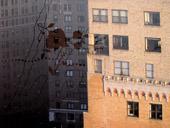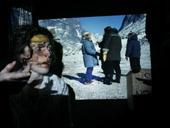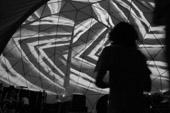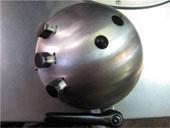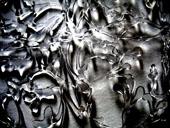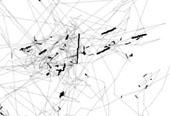Editorial
Welcome to JAR1, the first open submission and peer-reviewed issue of the Journal for Artistic Research. JAR remains a work-in-progress, and with this issue we introduce two major enhancements to the journal: a dedicated and open peer-reviewing process and an upgraded publication platform (the Research Catalogue) that is easier to use than its predecessor and enhanced with an initial set of social media functions. With these developments JAR builds on its interest in improving the artistic and intellectual value of research publications, by strengthening the link to the community of artists and researchers. The publication of JAR 1 is a particularly important occasion for us, because, over the past months we have been looking at the key problem of how best to peer-review artistic research. We have come up with a solution we are tentatively proud of, aware that the peer-reviewing we propose is vital for the journal’s credibility, artistic or otherwise. We are interested to hear what you think.
In JAR, peer-review goes hand-in-hand with an open submission policy, where anybody can submit their research to JAR providing they use the Research Catalogue platform.1 Being open submission is of great importance to us, not only because we want to invite as much participation as possible, but also because we simply cannot know where, how and under what conditions artistic research might emerge. This places a huge responsibility on us to deal with submissions fairly. Arguably, the best way of insuring fairness would be the publication of a set of criteria, which a submission needs to fulfil to be accepted. However although such approaches may be suitable for educational establishments, for JAR we noted quickly that a bureaucratic approach robs artistic research of potential radical self-determination, that is, of art.
JAR's reviewing process operates in a space between the application of criteria and a free encounter. We provide reviewers with a form or checklist and ask them to consider not only if a submission adheres to a point on that list, but also if non-adherence poses a problem. To take an example, we generally hold that research should be contextualised. If a lack of contextualisation is observed we would like to know if that lack is detrimental to the submission, since we accept that such lack might have artistic relevance. Ultimately, it is conceivable that a submission defies all possible 'criteria' and is still accepted. We find this prospect very exciting and ask peer-reviewers to help to find out if particular transgressions actually make sense.
There is much to say about the details, but one aspect is of particular importance to us and represents JAR’s unique approach. We are not asking reviewers to assess the quality of the art that is presented in a submission. Rather, we ask them whether what is presented is of artistic or intellectual interest, which might, but need not, coincide with an assessment of art. Moreover, we ask reviewers whether a submission exposes2 the practice that is presented as research, that is, whether and how submissions engage with writing as making. Taken together, both of these points look for artistic-epistemic engagement in the pages of JAR rather than a passive documentation of works of art paired with a press release. To push this point even further, we expect that material, which in a different context reviewers and editors would consider high quality art, might still disappoint in JAR if knowledge implications are not developed that are artistically or intellectually relevant. Naturally, this is one of the reasons why JAR is not in the business of competing with glossy online or offline art magazines. Adding to the question of art, and based on our experience with the current review form, we specifically plan to ask reviewers whether they believe a submission has sufficiently developed the knowledge implications that are made tangible in the practice that is presented. In case they feel that such potential is not met, we ask them for ideas and suggestions on how they think the exposition may be improved.
The lack of formal and disciplinary criteria for the assessment of submissions provides space for as much self-determination as we can master in the context of an academic and peer-reviewed journal. Radical transdisciplinarity is necessary to JAR, which operates across disciplinary frameworks that are mostly external to the research and, thus, partial. This ambitious approach does not, however, prevent voices, such as Katrin Busch's in a recent article in Texte zur Kunst, from arguing that a journal like ours was complicit in the 'taming of the shrew', which is to say guilty of disciplining art (Busch 2011: 72). While we accept that the introduction of a peer-reviewed journal for artistic research can hardly be neutral given the traditionally disciplinary uses of this process, I would like to raise a number of points to prevent JAR from automatic association with the disciplining of art and its (knowledge-) economic exploitation.
Firstly, as stated above, JAR does not assess art. In our understanding the conflation of art and research is a device advocated by those who use the recent emphasis on research to control liberal art education as well as those who defend it. More than an interest in the epistemological potential of artistic practice these positions seem to serve their respective take on the contemporary role of art. Secondly, given that artistic research is becoming increasingly relevant for funding and education, JAR wants to propose an intellectually more challenging concept of artistic research, than the one often utilised by funding agencies and examination boards. Although peer-reviewed and academic, JAR is independent and does not serve any other purpose than the idea of artistic research. Thirdly, we trust artists and researchers not to submit their research to JAR if they think that their integrity is compromised by this publication. The real problem does not lie in the channel chosen for publishing artistic research, but in the way outcomes are measured and investments in research are evaluated. Despite advocating peer-review, we oppose the measurement of artistic research by simplistic impact factors and the like, in particular if these are used to distribute resources. In the field of artistic research, journal publications cannot be made to function for all researchers and/or projects alike, because, we maintain, formats are not neutral. And finally, perhaps as an aside only, it seems useful to question the murky processes by which art is published in art magazines, performances and exhibitions etc, which may define what today is accepted as art, but which cannot serve as an ideal for the publication of artistic research. As problematic as open submission peer-review might be, at least it promises fairer access to publication. When concluding reports by the reviewers are made available, such as we do in JAR, a better and shared understanding of the kinds of considerations that matter to the reviewers might emerge, which, we hope, will add to the discourse and trigger responses by the community, critical or not.
Of course, even publishing review reports does not make the reviewing process fully open since the reports do not reflect the dynamic working processes between researchers, reviewers and editors. JAR uses peer-review first and foremost to improve the quality of the artistic research expositions that show potential for being published. The review reports are 'after the fact' giving the reviewers the opportunity to communicate concluding remarks which might remain critical. This highlights the fact that the Editorial Board is negotiating overlapping but divergent opinions and that the peer-reviewing of artistic research is discursive rather than judgemental. It might be that in the future such overlap will increase due to developments in the field, but it is highly likely that essentially different appreciations will remain. Instead of pretending that absolute agreement has been reached, JAR opts for opening up the discussion. Difference does not compromise quality; rather it adds to it. Our focus on discourse is also emphasised technically since review reports are integrated into the Research Catalogue comments section with the hope that the research community will continue the discussion.
I would like to take this opportunity to thank all reviewers for their generosity. In most cases we were positively surprised by the engagement with the expositions that reviewers have shown which as we know from our communications with the researchers was greatly appreciated. We would also like to thank those reviewers and researchers, who got in touch and gave us feedback on our process. In addition, and perhaps the greatest sign of the maturity of the field is the amount of reviewers who agreed to publish their name with their review report: a total of 80% in JAR1. I would also like to take this opportunity to thank all editors and our review editor, Henk Borgdorff, in particular for having developed and professionally run what I believe to be an excellent review process for artistic research. Please contact us should you want to become a JAR peer-reviewer. (Note: Alongside academics we invite artists to become peer-reviewers, including those who see themselves as researchers but are not affiliated to an academy.)
You will find the second major development not so much in JAR but in the Research Catalogue (RC), which JAR uses and which has great implications for the way research expositions will be developed in the future. This development represents the final phase of the Artistic Research Catalogue (ARC) project supported by the Dutch government and a group of 19 international partners. Since our inaugural issue came out, in March 2011, JAR has been operating with an initial and rudimentary prototype Research Catalogue software. As difficult as this might have been at times, it provided us with a test bed to sharpen our understanding of the needs of artistic researchers. Having started as a publication project, the RC has now been developed to include an initial set of pre- and post-publication communication facilities. Before a research exposition is published, this includes functions for collaboration and the sharing of research.3 After publication, this includes better access to recently published research and a comments feature, where you will also find peer-reviewers’ final reports.
This signals not only a further move of JAR towards the enhanced publication paradigm, but also indicates the place JAR desires to be, within the wider context. While we recognize that publishing in a peer-reviewed academic journal is important for some, we are also very aware that most artistic research operates without such desires, being perfectly happy with simple self-publication. This has a number of important implications. Firstly, a researcher might want to create a more comprehensive publication of their research using the tools the RC offers, an option which would be restricted if everything had to pass through peer-review. This in turn allows for the comparison of peer-reviewed and non-peer-reviewed research expositions providing a corrective to us and strengthening the debate around peer-reviewing. Secondly, in case a submission is rejected by JAR it may still be self-published, potentially to signal disagreement with the journal’s decision. Thirdly, the RC may become the host for alternative journals or collaborative projects that advocate approaches different to JAR.4 Sharing the RC platform with those is a win-win situation for us, because a multiplicity of approaches to artistic research is crucial to us. We categorically do not want to claim exclusivity and pro-actively champion differentiation, since we feel that artistic research would suffer should standards conflate and its identity become fixed.5
We are thus very happy to introduce eight research expositions in this first peer-reviewed issue of JAR. These contributions are from researchers in different stages of their careers involved in a number of artistic disciplines. Given that much patience was needed to get to grips with not only the exposition format but also the RC software, I would like to take this opportunity to thank them all.
Finally, I would very much like to stress that JAR accepts submissions on an ongoing basis and that we publish deadlines only to indicate a cut-off point. Rather than waiting to the last minute, we prefer to continuously receive submissions, a process which helps us to spread the work more evenly. Having said this, the cut-off point for JAR2 will be February 15, 2012 for a publication date in May/June. I am also happy to announce that Barnaby Drabble is now JAR's Managing Editor making sure that all communication is clear and that workflows are optimized. The JAR submission process is fairly simple: if you have not done so already, you will need to register for an RC account. Once you have received your account details you can start creating your research exposition, which when it is ready you can submit to JAR. Initially, we will check that all formal requirements are adhered to and whether a contribution lies within the remit of JAR before the submission is passed into peer-review. You will receive a letter from us informing you about the outcome of this process, which may be an invitation for your research to be published in JAR. So, please start registering for the RC and developing your exposition.
Michael Schwab
Editor-in-Chief
Bibliography
Busch, Kathrin, ‘Generating Knowledge in the Arts - A Philosophical Daydream’, Texte Zur Kunst, 2011, pp. 70-9.
- 1The Research Catalogue (RC) is a software platform that encourages researchers to take a step beyond simple uploading documentation of existing research. In the RC editor interface, research needs to be laid-out in expositions, a technically more demanding process than posting a PDF but one which we feel leads to vastly more interesting writing and reading processes. It is however clear to us that certain researchers might be put off by the software or find publishing in JAR too demanding and that for some researchers around the world access to the internet is a problem. Whilst we do what we can to increase accessibility we are aware that having opted for the RC might create a bias.
- 2The exposition of practice as research is JAR's purpose, but also something we seek in submissions to the journal. For more information on the meaning of 'exposition' see the Editorial to JAR0 here: https://jar-online.net/en/issues/0
- 3Researchers can opt to share their research in the RC. Sharing makes the research public while it can still be changed and further developed. Once a researcher opts to publish his or her research, which might have been shared or not, the research is both public and fixed. Needless to say, a researcher can also opt to submit his or her research to JAR. Submitting locks the research for the review process until it is finally published through JAR.
- 4At present the RC serves, with JAR, only one portal. In the near future the RC will also serve other portals, which might be alternative journals, institutional repositories or research projects. Although research on the RC can already be linked from any of these, the particular benefit of RC portals lies in the fact that they are vessels to receive submissions and to implement respective workflows and quality control. Should you be interested in becoming a portal partner, please contact the Society for Artistic Research.
- 5The question whether artistic research forms a discipline or not is still hotly debated. We speculate that a number of partially contradictory standards will make the formation of a discipline more difficult. If JAR were to remain the only journal to focus on the publication of artistic research, there would be a danger that JAR might be overvalued. To avoid this, with the RC, we built an open environment.

